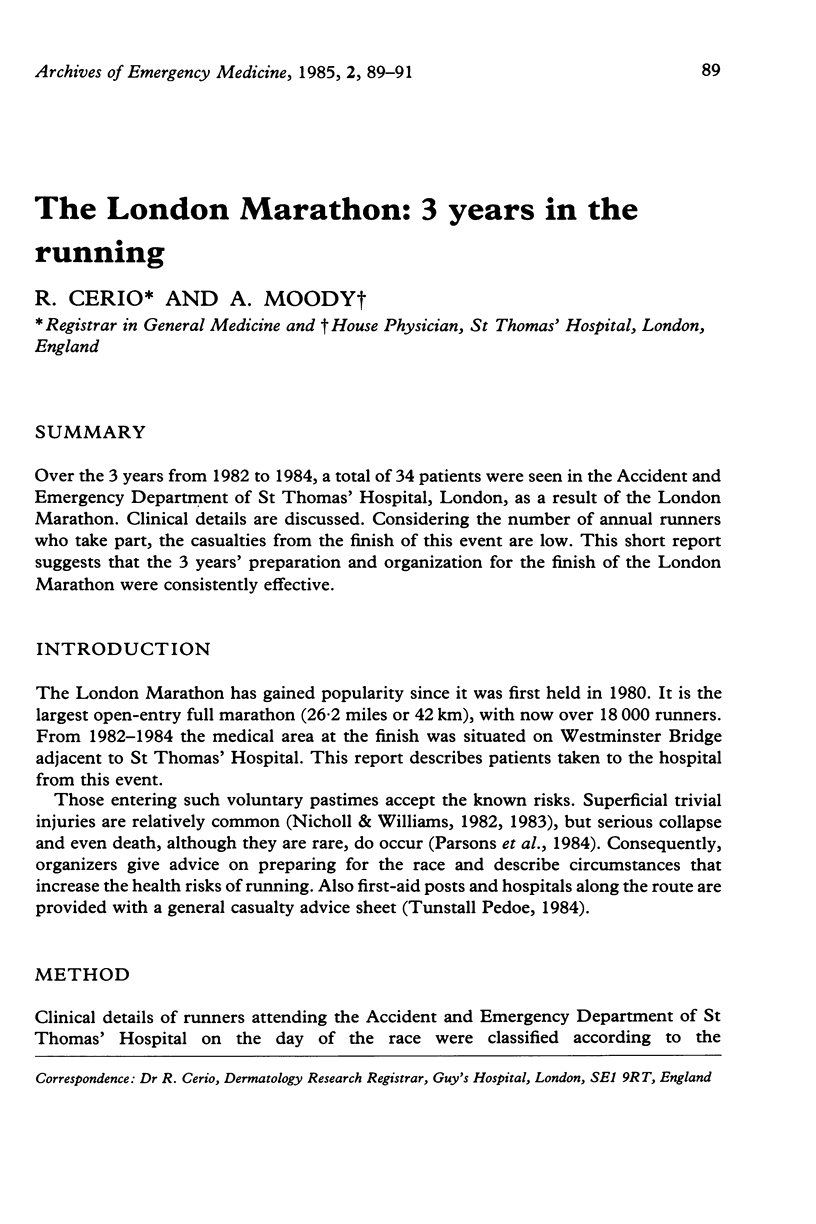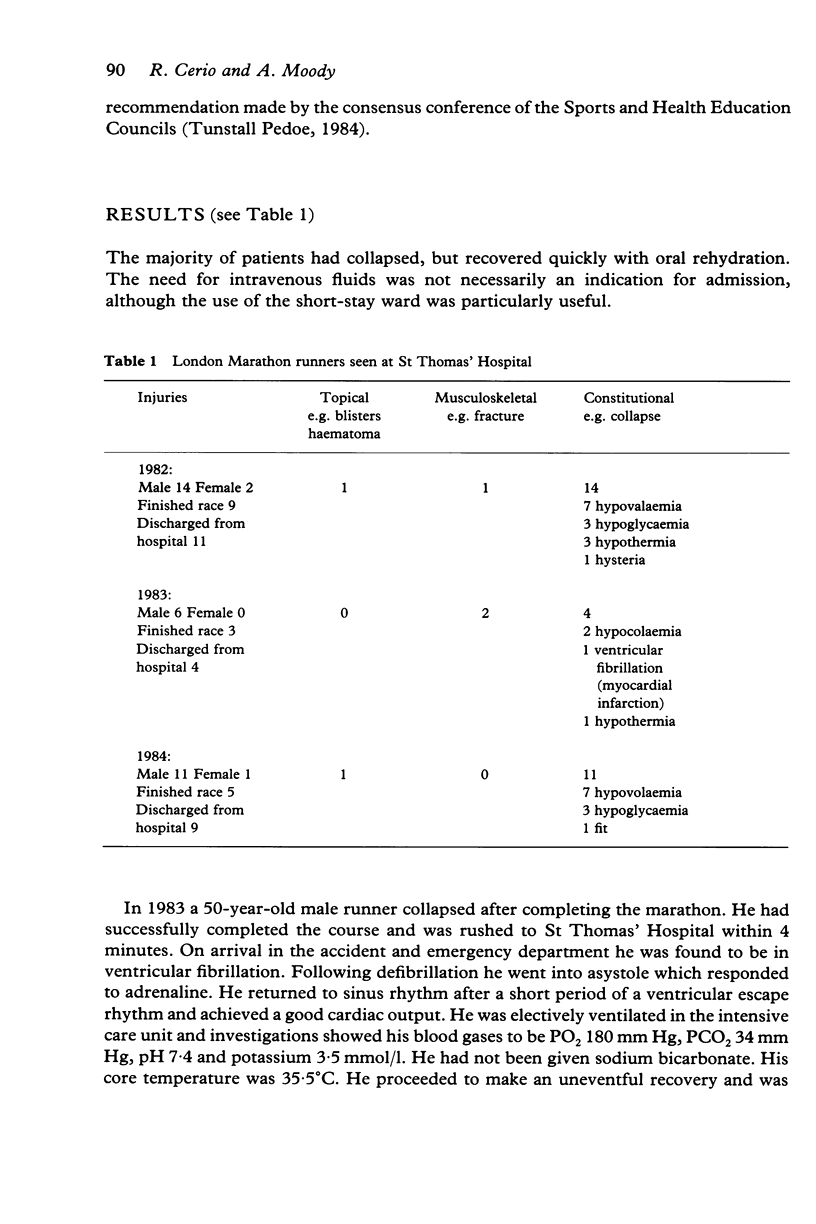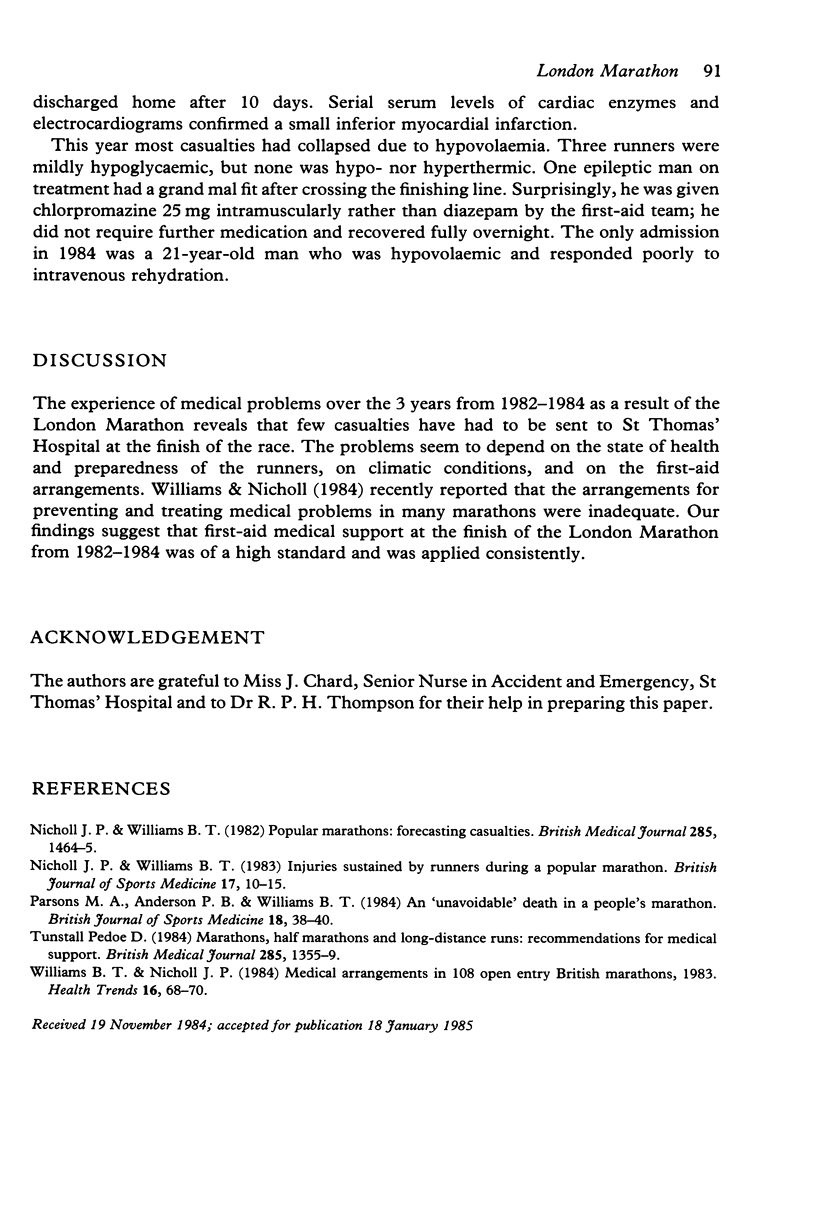Abstract
Over the 3 years from 1982 to 1984, a total of 34 patients were seen in the Accident and Emergency Department of St Thomas' Hospital, London, as a result of the London Marathon. Clinical details are discussed. Considering the number of annual runners who take part, the casualties from the finish of this event are low. This short report suggests that the 3 years' preparation and organization for the finish of the London Marathon were consistently effective.
Full text
PDF


Selected References
These references are in PubMed. This may not be the complete list of references from this article.
- Nicholl J. P., Williams B. T. Injuries sustained by runners during a popular marathon. Br J Sports Med. 1983 Mar;17(1):10–15. doi: 10.1136/bjsm.17.1.10. [DOI] [PMC free article] [PubMed] [Google Scholar]
- Nicholl J. P., Williams B. T. Popular marathons: forecasting casualties. Br Med J (Clin Res Ed) 1982 Nov 20;285(6353):1464–1465. doi: 10.1136/bmj.285.6353.1464-a. [DOI] [PMC free article] [PubMed] [Google Scholar]
- Parsons M. A., Anderson P. B., Williams B. T. An "unavoidable" death in a people's marathon. Br J Sports Med. 1984 Mar;18(1):38–39. doi: 10.1136/bjsm.18.1.38. [DOI] [PMC free article] [PubMed] [Google Scholar]
- Williams B. T., Nicholl J. P. Medical arrangements in 108 open-entry Britain marathons, 1983. Health Trends. 1984 Aug;16(3):68–70. [PubMed] [Google Scholar]


